If you own a Harley Davidson, you know how important it is to keep your charging system in optimal condition. The charging system is responsible for providing power to your motorcycle’s battery, ensuring that it stays charged and ready for use. In this guide, we’ll explore the components of a Harley charging system, how they work, and how to diagnose and maintain them when/if your Harley loses all its electrical power..
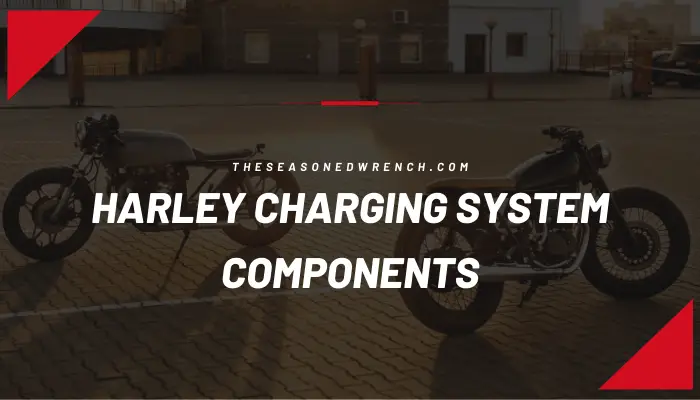
Harley Davidson Charging System Components
There are three main components in a Harley charging system:
- The Battery: This is the voltage center of the bike, storing the DC current needed to power the motorcycle’s electrical components.
- The Stator: This component is responsible for generating electricity as the engine runs.
- The Regulator Rectifier (also known as an R&R): This component is responsible for converting the AC current generated by the stator to DC current and regulating the voltage sent to the battery.
The Battery
Motorcycle batteries are essential for providing power to start the bike and operate its electrical components. Harley Davidson motorcycles typically use a 12-volt battery, ensuring sufficient power for all onboard systems.
The Stator
The stator is an integral part of the motorcycle’s charging system, generating electricity as the engine runs. It is a metal core with numerous windings of copper wire, or coils, which generate electricity when exposed to a varying magnetic field produced by the spinning flywheel and its magnets.
Keep reading: Bad Harley Stator Symptoms
How Does A Stator Work?
As the engine’s crankshaft spins, so does the flywheel with its embedded magnets. These magnets pass by the stator’s metal core, creating a varying magnetic field and resistance that induces electricity in the copper wire windings. This generated electricity is then sent to the regulator rectifier, which converts it to DC current and charges the battery.
The Regulator Rectifier (also known as an R&R)
The regulator rectifier is a crucial component of the charging system, responsible for converting the AC current generated by the stator to DC current suitable for charging the battery. It also ensures that the voltage sent to the battery remains within an acceptable range, preventing damage to the battery and other electrical components.
How Does a Regulator Rectifier Work?
The rectifier section of the R&R uses diodes to convert the AC current from the stator into DC current. The regulator section then monitors the battery’s voltage and adjusts the current flow accordingly to maintain a consistent battery voltage, typically around 14.4 volts.
Read next: How Long Do Harleys Last?
Hey you! Keep your Harley Davidson running in tip top shape with these suggestions:
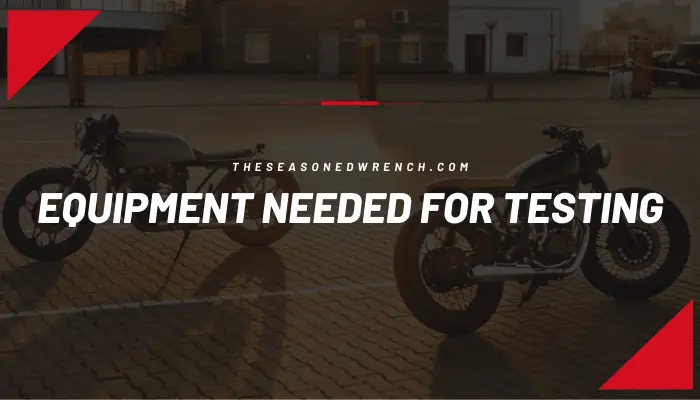
What You Will Need To Diagnose a Harley Charging System
To accurately diagnose your Harley Davidson’s charging system, you’ll need the following tools and resources:
- A Harley Davidson Service Manual: This invaluable resource contains detailed information about your motorcycle’s charging system, including specifications, procedures, and troubleshooting tips.
- A Multimeter: This versatile tool allows you to measure voltage, continuity, and resistance, helping you pinpoint any issues with your charging system.
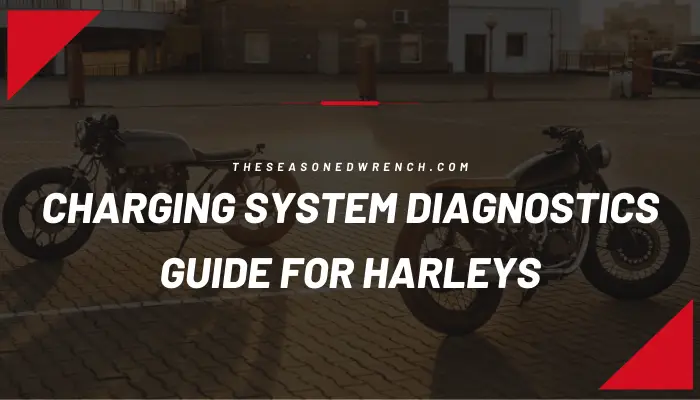
Other common Harley problems, how to understand and fix them:
- sputtering on acceleration
- Harley has no spark
- Harley has power but won’t start
- motorcycle keeps stalling
- Harley no power ignition switch problem
- Harley 131 Crate Motor Problems
- Harley Davidson switchback problems
- Harley Davidson fuel injection problems
- Check this if your Harley is idling high
- Harley Davidson brake light switch problems
How To Test A Harley Charging System
Use these following tests to diagnose and maintain your Harley Davidson’s charging system effectively:
Do A Battery Test
Signs Of A Bad Battery
- Difficulty starting the engine: A weak battery may struggle to provide enough power to start the engine, resulting in slow cranking or no cranking at all.
- Frequent need for jump-starts or recharging: If your battery consistently needs jump-starts or recharging, it may be unable to hold a proper charge.
- Swollen or leaking battery case: A damaged or swollen battery case can be a sign of an overcharged or failing battery.
- Dim or flickering lights: A weak battery may not provide enough power to maintain consistent lighting, resulting in dim or flickering lights.
Check The Battery Terminals
Inspect the battery terminals for any signs of corrosion or damage. Clean the terminals if necessary, and ensure they are securely connected. Loose or corroded connections can impede the flow of current, leading to charging system issues.
Check The Battery Voltage
Using your own meter or multimeter, measure the battery voltage by connecting the red probe to the positive terminal and the black probe to the negative terminal. A fully charged battery should read around 12.6 volts. If the voltage is lower, consider charging the battery or replacing it if necessary.
What’s The Proper Battery Voltage?
- 12.7 volts = 100% charge
- 12.6 volts = 75% charge
- 12.3 volts = 50% charge
- 12.0 volts = 25% charge
- 11.8 volts = 0% charge
Check The Battery Under Load
To test the battery under load, start the motorcycle and let it idle. Use the multimeter to measure the battery voltage again. The voltage should increase to around 13 to 13.8 volts. If it does not, there may be an issue with the electrical system.
Check The Stator Wires
Inspect the stator wires for any signs of damage or wear. Damaged stator wire wires can impede the flow of electricity and cause electrical system issues.
Test The Stator
To test the stator, follow these steps:
- Disconnect the stator from the voltage regulator.
- Set your multimeter to the AC voltage setting.
- With the bike running, measure the AC voltage across the stator wires.
- The voltage should be approximately 18-20 AC volts per 1,000 RPM (refer to your service manual for specific values for your motorcycle).
If the stator voltage is not within the specified range, there may be an issue with the stator or rotor.
Signs Of A Bad Stator
- Weak or dead battery: If the stator is not producing enough electricity, the battery will not charge properly, leading to a weak or dead battery.
- Dimming lights or electrical accessories: A failing stator can cause decreased power output, resulting in dim or flickering lights and reduced performance of electrical accessories.
- Poor engine performance: Insufficient electrical power can affect the engine’s ignition system, leading to poor performance and potential stalling.
Test The Regulator Rectifier
To test the regulator rectifier, follow these steps:
- Turn off the motorcycle and disconnect the regulator rectifier.
- Set your multimeter to the diode test setting.
- Connect the multimeter probes to the regulator rectifier’s input and output wires, following the guidance in your service manual.
- The multimeter should display specific voltage readings (refer to your service manual for the correct values).
If the regulator rectifier voltage readings are not within the specified range, there may be a problem with the regulator rectifier.
Signs Of A Bad Regulator
- Dimming or flickering headlights: If the regulator is not maintaining a consistent voltage, the headlights may dim or flicker as the voltage fluctuates.
- Overheating or burnt smell: A failing regulator can cause excessive heat, which may lead to a burnt smell or even visible melting of the regulator’s components.
- Dead or overcharged battery: An improper voltage output from the regulator can result in a dead battery (if the voltage is too low) or an overcharged battery (if the voltage is too high).
- Erratic engine behavior: Fluctuating voltage levels can cause the engine to stall, misfire, or have poor performance.
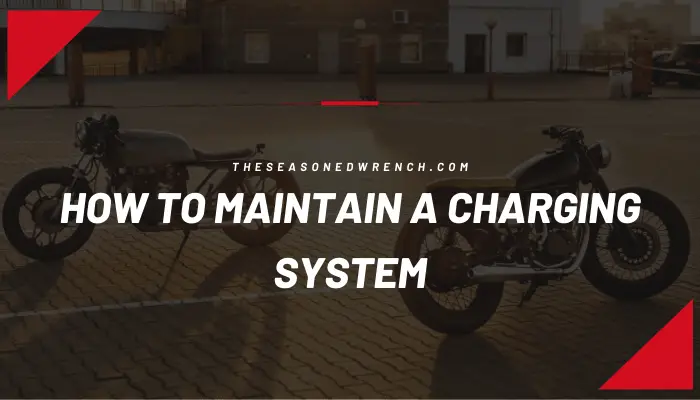
How To Maintain A Harley Charging System
Proper maintenance of your Harley Davidson’s electrical system is crucial for ensuring its longevity and reliable performance. Here are some tips for maintaining your charging system:
Using A Trickle Charger
Use a trickle charger to maintain your battery’s charge during periods of infrequent use or long-term storage. This will help prolong the battery’s life and prevent damage due to a deeply discharged battery.
Not Adding Too Many Accessories
Avoid overloading your motorcycle’s electrical system with too much voltage from many accessories, as this can strain the charging system and lead to premature failure through what is known as a parasitic drain.
What Is A Parasitic Drain?
A parasitic drain occurs when an electrical component or accessory continues to draw power from the battery even when the motorcycle is turned off. This can lead to a dead battery and potential starting issues. Some common causes of parasitic drain include:
- Faulty or stuck switches: A switch that is stuck in the “on” position or malfunctioning can cause continuous power draw from the battery.
- Short circuits: Damaged wiring or components can create a short circuit, allowing current to flow continuously and drain the battery.
- Aftermarket accessories: Some aftermarket accessories, such as alarms or GPS systems, may draw power from the battery even when the bike is turned off.
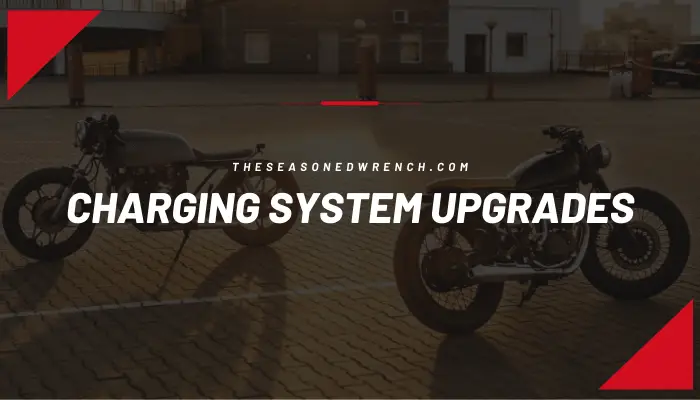
Upgrades For A Harley Charging System
If you’re looking to improve the performance and reliability of your Harley Davidson’s electrical system, consider the following upgrades:
- High Output Stator: A high output stator can provide additional power, ensuring that your battery remains fully charged even under demanding conditions.
- MOSFET Regulator Rectifier: A MOSFET regulator rectifier offers improved efficiency and durability compared to traditional regulator rectifiers, reducing the risk of failures.
- Lithium Battery: A lithium battery is lighter and more compact than traditional lead-acid batteries, offering improved performance and a longer lifespan.
- Higher Gauge Wires: Upgrading to higher gauge wires can improve the flow of electricity, enhancing the overall performance of the system.
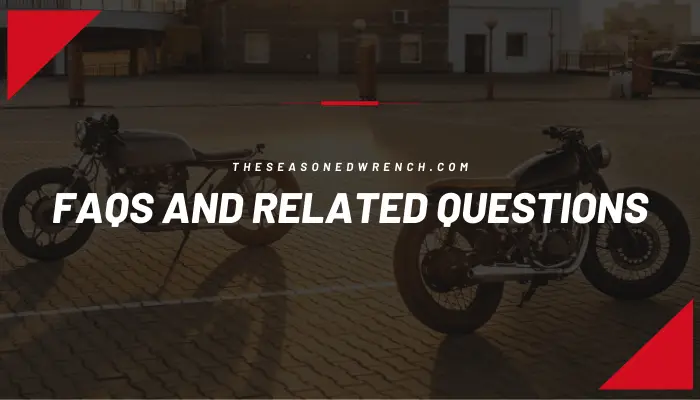
FAQs and Related Questions
What are the symptoms of a bad voltage regulator on a Harley Davidson?
Symptoms of a bad voltage regulator on a Harley Davidson can include fluctuating battery voltage, poor performance, and frequent blown fuses.
How do I know if my Harley stator is bad?
If your Harley stator is bad, you may experience issues with your electrical system, such as the battery not charging properly or the motorcycle not starting. To diagnose a bad stator, follow the stator testing procedures outlined in this guide.
What does the battery light mean on a Harley?
The battery light on a Harley indicates a potential issue with the electrical system, such as a low battery voltage or a malfunctioning regulator rectifier.
Can I ride with the battery light on?
While it’s possible to ride with the battery light on, doing so can put additional strain on your electrical system and lead to further damage. It’s best to diagnose and address the issue as soon as possible to prevent more serious problems.